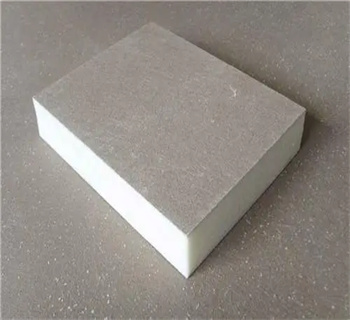Overview of Nanoparticle Silica Aerogel SiO2 Aerogel
Nanoparticle Silica Aerogel SiO2 Aerogel, commonly referred to as silica aerogel, is a highly porous solid material with exceptional thermal insulation properties. Derived from the controlled gelation of silica precursors, it exhibits an ultra-low density, high surface area, and remarkable transparency. Silica aerogel's unique structure, composed of interconnected nanometer-sized pores, confers it with superior thermal insulation capabilities, making it a prime candidate for use in a range of applications that require efficient heat management.
Characteristics of Nanoparticle Silica Aerogel SiO2 Aerogel
Ultra-Low Density: Silica aerogel boasts an exceptionally low density, making it lighter than air. This feature enables it to offer exceptional thermal insulation without adding significant weight to materials.
High Porosity: The material's porous structure, with pores as small as nanometers, provides a large surface area for heat exchange, enhancing its thermal insulation performance.
Excellent Thermal Insulation: Silica aerogel's low thermal conductivity makes it an effective material for thermal insulation in various applications.
Transparency: Depending on its density, silica aerogel can be transparent or translucent, allowing for its use in optical applications where transparency is crucial.
Chemical Resistance: Silica aerogel exhibits good chemical stability, resisting corrosion and degradation in harsh environments.
Application of Nanoparticle Silica Aerogel SiO2 Aerogel
Thermal Insulation: Silica aerogel is widely used in thermal insulation applications, such as building materials, industrial equipment, and cryogenic insulation.

Thermal Insulation
Optical Devices: Its transparency and refractive index make it suitable for use in optical devices, including windows, lenses, and optical fibers.

Optical Devices
Catalysis Support: The high porosity and surface area of silica aerogel enhance catalytic activity, making it a useful support for catalysts in chemical reactions.

Catalysis Support
Space Exploration: Its lightweight and thermal insulation properties make silica aerogel a suitable material for space exploration applications, such as insulation for spacecraft and telescopes.

Space Exploration
Biological Applications: Silica aerogel has also found applications in biology, serving as a substrate for cell cultures and tissue engineering due to its biocompatibility and porous structure.

Biological Applications

Company Profile
NANOTRUN(www.rboschco.com) is a trusted global chemical material supplier & manufacturer with over 12-year-experience in providing super high-quality chemicals and nanomaterials, including boride powder, nitride powder, graphite powder, sulfide powder, 3D printing powder, etc.
The company has a professional technical department and Quality Supervision Department, a well-equipped laboratory, and equipped with advanced testing equipment and after-sales customer service center.
If you are looking for high-quality Nanoparticle Silica Aerogel SiO2 Aerogel, please feel free to contact us or click on the needed products to send an inquiry.
Payment Term
L/C, T/T, Western Union, Paypal, Credit Card etc.

Shipment Term
By sea, by air, by express, as customers request.
FAQ
Q1:
What is the primary advantage of using silica aerogel in thermal insulation applications?
Re: The primary advantage of using silica aerogel in thermal insulation applications is its ultra-low density and exceptional thermal insulation properties. Its unique porous structure effectively traps air, significantly reducing heat transfer and providing superior insulation compared to traditional materials. This makes it an ideal choice for enhancing energy efficiency in buildings and other structures.
Is silica aerogel transparent?
Re: Silica aerogel can be transparent or translucent depending on its density. Lower-density aerogels exhibit higher transparency, allowing light to pass through, while higher-density ones may appear translucent or opaque. Transparency is a desirable property in optical applications where light transmission is crucial.
How does the porosity of silica aerogel affect its performance?
Re: The porosity of silica aerogel significantly affects its performance. The interconnected nanometer-sized pores provide a large surface area for heat exchange, enhancing the material's thermal insulation capabilities. Additionally, the porosity also contributes to the material's lightweight and high surface area, making it suitable for various applications that require efficient heat management and high surface area for catalytic reactions.
Is silica aerogel chemically stable?
Re: Yes, silica aerogel exhibits good chemical stability, resisting corrosion and degradation in harsh environments. Its chemical resistance makes it suitable for use in a wide range of applications, including those involving exposure to chemicals or extreme temperatures.
Are there any limitations to the use of silica aerogel?
Re: While silica aerogel offers numerous advantages, it also has some limitations. Its fragility and brittleness can make it challenging to handle and process, especially in larger sizes. Additionally, its high porosity and low density can sometimes result in reduced mechanical strength, limiting its use in certain applications that require high strength materials.
Silica Aerogel SiO2 Properties | |
| Other Names | Silica Aerogel, SiO2 Aerogel, Aerogel. |
| CAS No. | N/A |
| Compound Formula | SiO2 |
| Molecular Weight | 60.09 |
| Appearance | Translucent solid |
| Melting Point | 1200 °C |
| Solubility in water | N/A |
| Density | 0.1 g/cm3 |
| Purity | 90-95 |
| Particle Size | N/A |
| Boling point | N/A |
| Specific Heat | N/A |
| Thermal Conductivity | N/A |
| Thermal Expansion | N/A |
| Young's Modulus | N/A |
| Exact Mass | N/A |
| Monoisotopic Mass | N/A |
Silica Aerogel SiO2 Health & Safety Information | |
| Safety Warning | Danger |
| Hazard Statements | H350-H373 |
| Flashing point | N/A |
| Hazard Codes | N/A |
| Risk Codes | N/A |
| Safety Statements | N/A |
| RTECS Number | N/A |
| Transport Information | NONH |
| WGK Germany | N/A |




